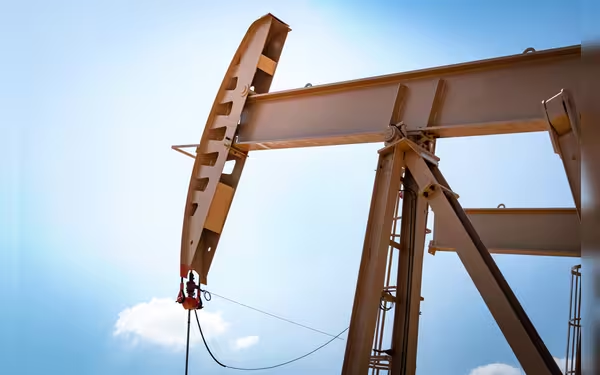Saturday, November 16, 2024 05:45 PM
Oil Prices Steady as US Storm Threat Eases and China Stimulus Falls Short
- Oil prices stable amid easing US storm concerns.
- China's stimulus package disappoints investors.
- US refiners maintain high processing capacity.
 Image Credits: arabnewspk
Image Credits: arabnewspkOil prices remain stable as US storm threat diminishes and China's stimulus fails to meet expectations.
Oil prices have remained relatively stable as of Monday, reflecting a balance between easing supply concerns and disappointing economic signals from China. The recent threat of supply disruptions due to a storm in the United States has diminished, while China's latest stimulus plan has not met the expectations of investors looking for a boost in fuel demand.
As of 10:14 a.m. Saudi time, Brent crude futures saw a slight increase of 4 cents, reaching $73.91 a barrel. Meanwhile, US West Texas Intermediate crude futures experienced a minor decline, trading at $70.31 a barrel, down 7 cents. The fluctuations in oil prices are closely tied to global economic conditions, particularly in major markets like the US and China.
China, the world's second-largest oil consumer, recently announced a stimulus package during the National People’s Congress (NPC) standing committee meeting. However, this package fell short of market expectations, leading to concerns about the future of oil demand in the country. According to IG market analyst Tony Sycamore, the guidance provided by Chinese officials suggested only modest support for housing and consumption, which could limit the anticipated growth in fuel demand.
Analysts from ANZ noted that the absence of direct fiscal stimulus indicates that Chinese policymakers are likely waiting to assess the impact of policies from the next US administration. This uncertainty has led to a cautious outlook among investors, who are now looking ahead to the upcoming Politburo meeting and Central Economic Work Conference in December. These events are expected to yield more pro-consumption measures that could positively influence oil demand.
In addition to the economic situation in China, oil prices have also been affected by the recent storm Rafael in the US Gulf of Mexico. Although more than a quarter of oil production and 16 percent of natural gas output remained offline as of Sunday, major companies like Shell and Chevron have begun redeploying personnel to their platforms, signaling a return to normal operations.
Looking forward, there are concerns regarding the potential increase in US oil and gas output under the new Trump administration. While analysts believe that the production forecast for 2025 is unlikely to change significantly, there is speculation that producers may hesitate to ramp up supply aggressively, especially with OPEC+ planning to gradually raise production targets.
Trump's campaign promises to increase import tariffs to bolster the US economy have added complexity to the global economic landscape. However, expectations that he may impose stricter sanctions on OPEC producers like Iran and Venezuela could lead to tighter oil supplies in the global market, which has contributed to a slight increase in oil prices over the past week.
Despite these challenges, the oil market is being supported by strong demand from US refiners. Industry experts predict that refiners will operate their plants at over 90 percent of their crude processing capacity due to low inventories and a recovering demand for gasoline and diesel.
While oil prices are currently stable, the interplay of global economic factors, particularly in the US and China, will continue to shape the market. Investors and consumers alike should remain vigilant, as shifts in policy and economic conditions can lead to significant changes in oil prices. Understanding these dynamics is crucial for making informed decisions in an ever-evolving energy landscape.













